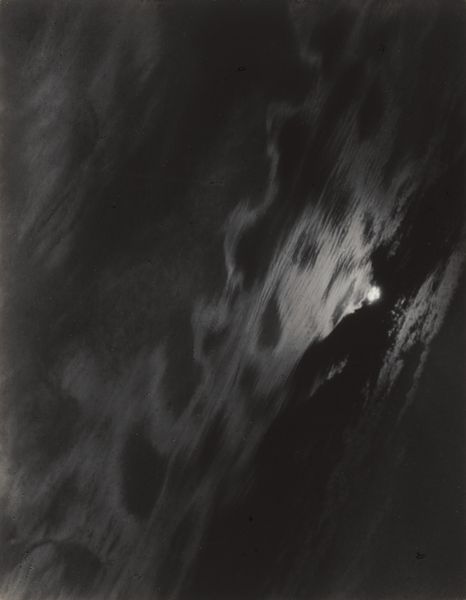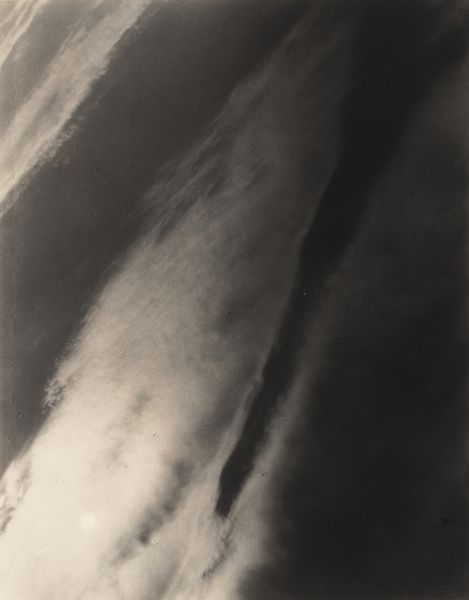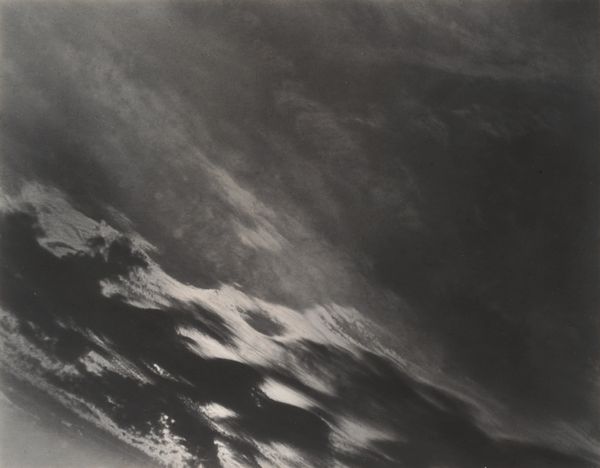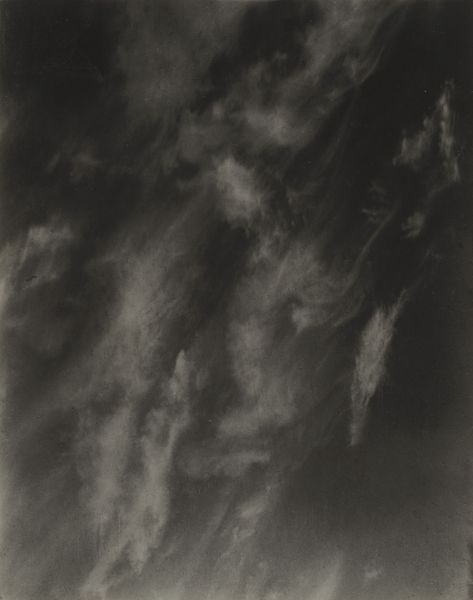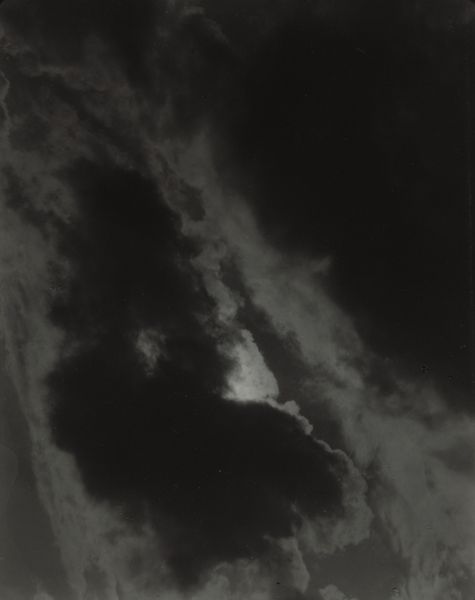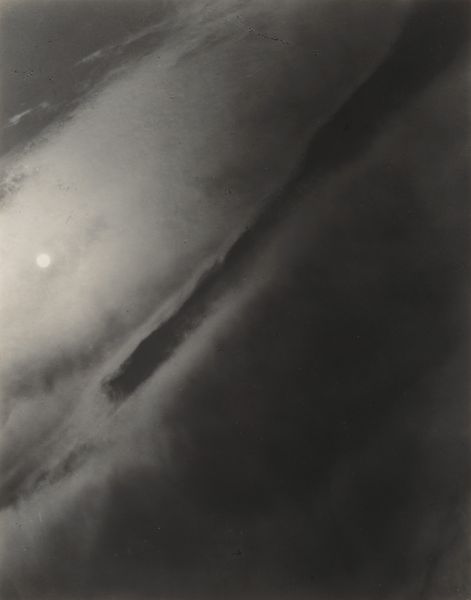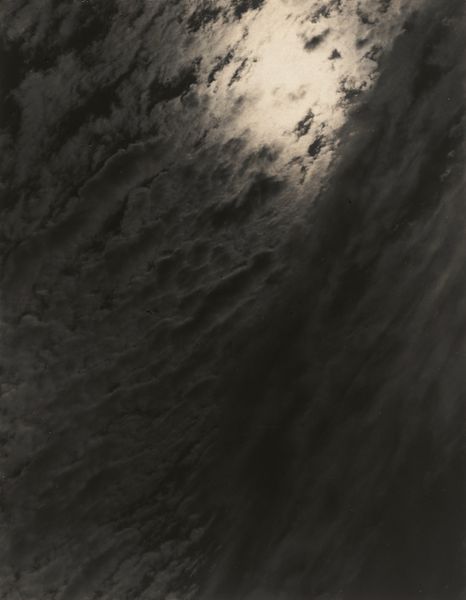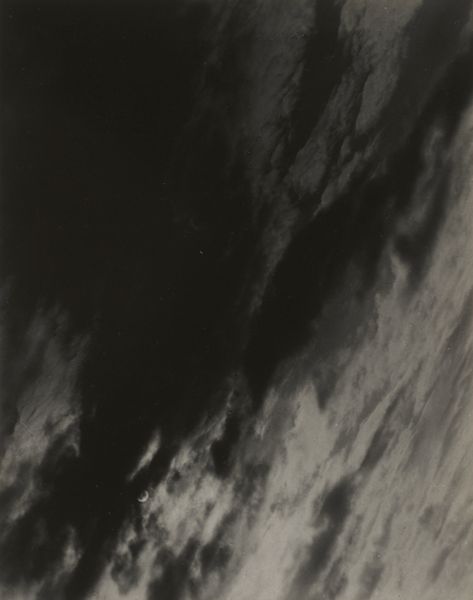
Dimensions: sheet (trimmed to image): 11.8 x 9.2 cm (4 5/8 x 3 5/8 in.) mount: 34.8 x 27.5 cm (13 11/16 x 10 13/16 in.)
Copyright: National Gallery of Art: CC0 1.0
Curator: Before us, we have Alfred Stieglitz’s 1931 gelatin silver print, "Equivalent." Editor: Striking. There’s an immediate, almost overwhelming sense of ethereality…of transcendence. Is this the sublime I feel? Curator: It is cloud formations that occupy our view; but it's the interplay of light and dark, the gradient tonality achieved through the gelatin silver process, which gives the work its potent abstract quality. Editor: Clouds often represent transformation, spirituality, perhaps a link between the earthly and the divine. Do you think Stieglitz chose this subject intentionally to convey deeper meaning? Curator: Doubtless, and to demonstrate his skill! The strategic composition is masterful. Notice how the diagonal thrust of the cloud formations pulls the eye upwards and outwards, almost defying the rectangular format of the print. The texture feels simultaneously chaotic and carefully orchestrated. Editor: It’s almost primordial, calling forth images of creation myths. It feels symbolic. In looking at this landscape, Stieglitz perhaps encourages us to search for what lies beyond literal depiction. It hints at other worlds... or perhaps a different state of consciousness. Curator: That's precisely it! By decontextualizing these ephemeral formations, Stieglitz allows for an interpretive experience. The clouds become stand-ins, allowing us a visual form with which to understand an immaterial process. The drama lies in the range of the values—the high-key areas contrasting starkly with the dark, undefined spaces. Editor: It strikes me as almost... hopeful. The light breaks through what seems like the encroaching darkness. Maybe this photo becomes a metaphor for finding light during times of strife. Curator: I find it difficult to disagree, though the hope, if we choose to call it that, is constructed from formal strategies—the luminosity achieved by carefully managed development, and that brilliant tonal range we've discussed. Editor: It does give a new appreciation for the power and the symbolism found in something as everyday as the shape of clouds. Curator: Indeed. An artwork isn’t always about its literal subject, but rather about how the aesthetic and compositional elements can inform meaning, regardless of what that form looks like!
Comments
No comments
Be the first to comment and join the conversation on the ultimate creative platform.
